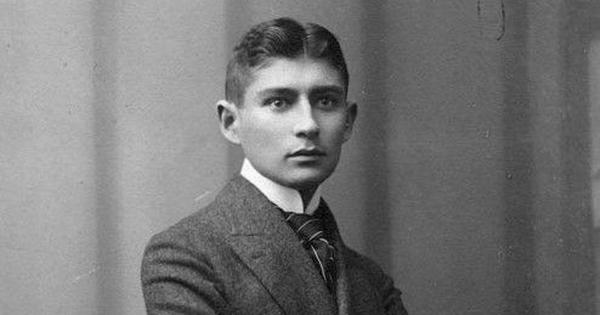
If one were to strip descriptions of one’s ethnic or racial appearance from a story, the way Toni Morrison does in Recitatif, then a search for a person’s race will often rely on interconnectedness or intersectional assumptions about socioeconomic status, geographic location, chosen profession and more. When a person is identified with a single identity, the master status takes on exceptional importance in that person’s life, often shaping it in its entirety. An obese man, regardless of his other interests and characteristics, may be routinely referred to as simply the fat guy.
Villains on view
How this sociological concept coincides with literature is interesting, since disabled bodies have traditionally filled the roles of villains. Shakespeare’s hunchback Richard III, or any number of fictional characters with missing legs, eyes or hands, have fulfilled the role of the bad guy and disabled bodies often filled such nefarious roles that are often forgotten. It’s only recently that main characters or even supporting characters include those with disabilities of various sorts, like Geordi LaForge from Star Trek or Tyrion Lannister from The Game of Thrones, to mention two popular examples.
Traditionally, characters who didn’t fit in cultural meta-narratives are presented as background figures who are usually seen as unimportant supporting characters and forgotten easily. Neither black or white, but mixed and thus forgotten. Neither heterosexual or homosexual, but bisexual and thus not represented. These characters are not healthy nor on their deathbed, they sit on the side-lines. We can call these characters the in-betweens.
Disability studies rethink the representation of such disabled people as traditional objects of disgust and figures of villainy or shadows relegated to the margins. Therefore, we can ask how disabilities have appeared throughout literature in positive ways, even before we began having a tradition of literature and media with wider representation.
Medusa, who laughs and converts others to stone and the sirens’ disfigured bodies of brass that nonetheless sing beautifully, are examples of beauty, art, and power found in disabled bodies. Even bodies in pain make works of art that thrive on their somatic sensations and can pinpoint lives’ greater ironies and poignancies.
The Kafka syndrome
Franz Kafka’s Metamorphosis, which details the travelling salesman’s innocuous transformation into a large poster-sized insect, may have in part been inspired by Kafka’s own shame, which he perceived to be his own bodily disfigurement. It is likely that Kafka was anorexic. He is a good example of that kind of artist we find in disability studies who pathologises themselves. He doesn’t pretend to be normal or healthy, but instead his suffering gives access to a greater awareness of brutal knowledge that affects us violently, as he said in a famous 1904 letter to a friend, “I think we ought to read only the kind of books that wound and stab us. If the book we’re reading doesn’t wake us up with a blow in the head, what are we reading it for? We need books that affect us like a disaster, make us grieve deeply like the death of someone we loved more than ourselves; A book must be an axe for the frozen sea inside us.”
There are canonical grotesque monsters. A grotesque monster is one which combines incongruous parts into a monstrous whole. Medusa is a dissonant union of snakes and a woman. Sirens are often figured as part bird and part woman, and Kafka’s protagonist Gregor Samsa is a man trapped in a bug’s body. Each of these characters are mythological, vivisected and sutured bodies that traditionally solicits reactions of horror and disgust. But modern readings have demythologised these bodies to reveal how they recall a kind of otherwise inaccessible wonder.
HG Wells introduces Prendick to the grotesque bodies of the satyr and the eighth man in The Island of Dr Moreau. It’s a throwback to TH Huxley’s introduction to his book, Man’s Place in Nature (1863), which begins by lauding the dreams of the ancients and the classical memories like Ovid’s Metamorphoses. Huxley, Wells and these other grotesque bodies all do the same championing of the imagination. They refuse the intellectual necrosis of human knowledge that may result from anatomising knowledge and reducing the human experience to its scientific diagnosis and disorders. As the late 20th-century Welsh national poet Gwyneth Lewis says, “every disease is a work of art if you play it rightly.”
Addicts and mad persons
Madness, culture, and literature have been a source of creativity, poetic genius and sometimes it is hallucinations as well. William Blake, one of the original British romantics of the late 18th and early 19th centuries, reportedly experienced visions as young as when he was four years old. He reifies his hallucinations as prophetic visions and creates his own mythology for comprehending the universe. In one of his portraits, we can see euros in his embodiment for reason and sometimes, it’s just the drugs.
Thomas De Quincy and Samuel Taylor Coleridge were both opium addicts in the early 19th century, and accessed wildly thrilling and ethereally sublime scenes while under the influence. De Quincy’s Confessions of an English Opium-Eater (1821) chronicles his life experiences of becoming addicted and illuminating in ways inaccessible to physicians at the time when the effects and consequences of the drug were largely unknown. Coleridge’s poem Kubla Khan is an incomplete fragment in the sense that it is based on an interrupted opium-induced dream. In it, Coleridge describes a rapturous image of Khan’s pleasure dome situated at the edge of an erupting fountain.
Even when something “mad” appears to have a legitimate and scientific explanation, we can still see this universal preoccupation, especially across Western art and culture, with burrowing into the depths of our minds. Henry Fuseli’s painting “The Nightmare” (1781) is commonly featured on the cover of editions of Frankenstein, not only because Fuseli was one of Mary Shelley’s mother’s lovers, but also because the painting captures the mad genius of a romantic poet. It has been argued that the painting is a representation of sleep paralysis.
In the painting, an incubus who sexually exploits women crouches on top of a recumbent woman, while a horse’s head breaks through the curtain background and gazes on. Unlike paintings of the earlier century during the Enlightenment, this painting by Fuseli is considered to be dark. Perhaps, representing the futility of light to penetrate the darker realms of our minds, the position of the woman reclining with one arm up and head tilted is an allusion to the classical sculpture of the “Sleeping Ariadne.” Fuseli’s work presents an irrational dreamworld full of intense feelings and sensuality. The mare or the nightmare indicates the sleep state, while the incubus suggests the titillation of descending into a dream state where desire reigns over order. The mind becomes stronger than the body, and the demon has rendered the woman as supine and vulnerable.
The mare is not just any nightmare but the Mara, an evil spirit of Germanic folklore that tortures and suffocates humans while they sleep. This is a mythological figuring of sleep paralysis. Samuel Johnson once described that the nightmare spirit is “morbid oppression in the night resembling the pressure of weight upon the breast.” This painting of Fuseli unsettled viewers who believed that art should only show the light and make sense of the world. Sometimes, even if we have a scientific explanation for things, our experiences, losses, hopes, stupid jokes, friends and so on don’t make sense, and perhaps we don’t want them to. This is how the revelation of madness as a form of greatness is conveyed.
Health as order
The mad poet and the mad scientist are archetypes consequent of social expectations for order rather than chaos. Healthy things are ordered, and this mantra can be used as a sweeping generalisation about Western medicine. Generally, ordered means good. Our body organises what comes in and what goes out. It is once your body stops organising itself that death and decay approach.
The concept of a healthy death in the universe is based not on the disappearance of all matter, but on the inability to use any of it. A state of entropy, like in a room where everything is askew and nothing can be achieved. This may appear to be a highly metaphorical way of thinking about health, but in the 19th century, these concepts of equilibrium informed theories of bodily economy. They did not stop at saying the mind is disordered, but went further to say that great irritation of one’s mental state, like constantly scratching on a violin string, could overexcite one’s physiology and lead to headaches, brain fever, consumption, anorexia, and other bodily disorders. This connection between the mind and the body’s excitability is called neurasthenia.
The idea of health as order captures our expectations of society as well in an essentially Hobbesian way. Order means establishing boundaries. Social and professional respect is hierarchical. Family structure designates who makes the decisions and who doesn’t and so forth. Imagine a world that was more equal with less borders and no rules. This would be the very definition of anarchy, but somewhere between the totalitarian order and anarchical disorder, we exist in a constant struggle for equality’s disorder yet protection’s order. Thus, the archetypal madwoman is shoved into the attic at best or an asylum at worst to compartmentalise and isolate the danger she poses.
Order is political, social, geographic and psychological. Art and literature generally conceptualised the mind with the same organising principle. The ordered mind is rational, while the disordered mind is mad. As a result, patient narratives by artists that give accounts of mental illness often seek a kind of recovery or healthy self-actualisation through recollection. A visceral remembering or reattaching of parts perceived as having been previously lost or never attained. It is like reattaching limbs or prosthetics to make the body whole again.
In Sylvia Plath’s The Bell Jar, her depressive state motivates her association of the act of writing with realising her rights and experiences as a woman. She recalls the self in order to heal, in contrast to the inability to reframe and reorder one’s experiences in art and literature may be generally understood as a collapse into psychosis. These kinds of illnesses and disorders also tend to elicit disgust and avoidance from surrounding figures. Ill minds, like ill bodies, threaten a kind of contagion and empathy. The erasure of physical and emotional boundaries threatens exposure of oneself to illness.
There’s even a 19th-century word to capture this idea. In 1875, Sir James Paget coined the word “neuromimesis” to indicate a kind of nervous mimicry or a disease of the imagination that causes one to mimic diseases upon observing them, which is kind of a pathological imitation that informs our understanding of certain late 19th century theories concerning the suggestibility of insanity which again underscores the history of mental illness as anchored in our initial understandings of feeling and imagination.
In fact, disorder can be good too. The archetype of the self-sacrificing scientist, of which Marie Curie is an example, as she died due to massive amounts of exposure to radiation as she studied radioactivity, gives too much of themselves to society. Adversely, order can be pathological, like too much order resulting in totalitarianism.
Monomaniacs in literature and art are these embodiments of extreme order as they represent the defensible self, a dream that our borders, bodies, and our known knowledges must be protected from alien invasion or contagions and the unknown. They fixate on one thing and protect that one thing till death. As a result, just as we associate disorder with empathy, we might associate order with not just disgust but selfishness. The monomaniacal scientist becomes implicated with the Body Snatchers, kills ruthlessly to serve his research interests. Those willing to operate without anaesthesia for more accurate observations of bodily processes, to further cold-blooded science.
The association between madness and ego is reciprocal in art and literature, as we have numerous figures whose inflated egos are so all-consuming that their single-mindedness is what qualifies them for madness. For instance, Shakespeare’s Hamlet or Herman Melville’s Captain Ahab are figures who pit themselves against the world. Ironically, even though they are typically perceived as destructive, their monomania still relies on a sense of order. How crazy is that?
📰 Crime Today News is proudly sponsored by DRYFRUIT & CO – A Brand by eFabby Global LLC
Design & Developed by Yes Mom Hosting





